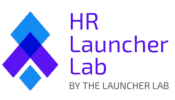Fast-scaling e-commerce growth brands thrive on agility, rapid experimentation, and the ability to seize market opportunities in real time. But when it comes to hiring, many companies default to just-in-time recruiting—filling roles reactively only when the immediate need arises. On the surface, it feels efficient: no extra salaries on the books until the demand is proven. In practice, it’s a risky strategy that erodes productivity, burns out teams, and slows down growth.
In competitive segments like DTC, marketplaces, and subscription commerce, delayed hiring doesn’t just leave you short-handed—it blocks critical projects, strains company culture, and limits your ability to scale. While the lean startup mindset may encourage reactive recruiting in the early days, mature e-commerce hiring strategies require a shift toward proactive recruiting supported by workforce planning, talent pipelines, and carefully validated AI recruitment tools.
This article unpacks why e-commerce companies often default to just-in-time hiring, the hidden costs of recruitment delays, and how to adopt a proactive hiring strategy that’s faster, more predictable, and scalable without compromising candidate quality or compliance.
Why E-commerce Companies Default to Just-in-Time Hiring
E-commerce hiring often operates in a reactive mode because growth can spike suddenly. A viral campaign, a major influencer collaboration, or a new product launch can change staffing needs overnight. For many founders and HR leaders, the temptation is to wait until headcount pressure is unbearable before opening a role.
The main drivers of this default include:
- Cash flow sensitivity: Avoiding fixed costs until revenue increases.
- Lean startup mindset: Mistaking reactive hiring for agility.
- Lack of workforce planning maturity: Skipping structured headcount forecasting.
- Limited internal recruiting capacity: Over-reliance on job boards or agencies.
- Focus on external growth over internal scaling: Prioritizing user acquisition over team readiness.
What works in the first year of operations often fails once you’re managing multiple storefronts, complex logistics, or 8-figure ad budgets.
The True Cost of Delayed Hiring in E-commerce
Delaying hiring in a fast-scaling e-commerce business has a cascading impact on growth, profitability, and culture.
Lost productivity and revenue
Unfilled roles in areas like growth marketing, logistics, or customer experience either get absorbed by overstretched team members or left unmanaged. In e-commerce, even a 36-day time-to-fill—a common average—can cost a full marketing cycle of potential sales.
Expensive hiring mistakes
When recruiting under pressure, it’s easy to compromise on cultural fit or role alignment. The cost of a bad hire can be up to 30% of first-year earnings, factoring in onboarding time, disrupted team dynamics, and re-hiring costs.
Employee burnout and turnover
Existing team members picking up extra work quickly reach burnout, leading to disengagement and voluntary turnover—often among top performers you can’t afford to lose.
Employer brand damage
Inconsistent hiring processes frustrate candidates and create negative impressions that can surface in industry networks or on employer review sites.
Scaling limitations
Vacant high-impact roles delay data projects, limit paid media performance, and stall expansion plans.
How AI-Powered Recruiting Can Prevent Recruitment Lag
E-commerce growth brands are increasingly turning to AI-powered recruiting tools to forecast hiring needs, build talent pipelines, and speed up screening. However, while AI can accelerate the process, it must be tested and validated to ensure it works accurately, fairly, and without bias.
Demand forecasting with AI
Predict staffing needs months in advance using AI talent analytics based on sales projections, turnover trends, and seasonal demand spikes.
Proactive talent pipeline building
AI recruitment tools can identify, categorize, and engage candidates with relevant e-commerce experience long before a job opens.
Candidate pre-screening automation
Resume parsing and skill-matching can save time, but results must be reviewed by trained recruiters to verify accuracy and avoid false negatives or biased filtering.
Internal mobility enhancement
AI can surface current employees with the potential to fill upcoming roles, reducing external hiring needs.
Scenario-based workforce planning
Integrating AI with your ATS and HRIS allows you to simulate headcount needs for specific growth initiatives, like international launches or multi-channel ad campaigns.
Actionable Steps to Move from Just-in-Time to Just-Ahead Recruiting
Step 1: Conduct a hiring audit
Review the last year’s hires and vacancies to identify which roles were filled under pressure and what the costs were in time, revenue, and retention.
Step 2: Align hiring with strategic goals
Meet quarterly with functional leaders to map headcount needs to product launches, campaigns, and seasonal demand.
Step 3: Invest in integrated HR tech
Combine your ATS with AI-driven talent intelligence platforms, ensuring they are validated for accuracy and bias mitigation before deployment.
Step 4: Build passive talent pools
Focus on your most frequent or hardest-to-fill roles. Define ideal profiles, source candidates proactively, and nurture relationships over time.
Step 5: Shift leadership mindset
Educate founders and department heads on the cost of hiring delays and the ROI of proactive recruiting.
Hire Smarter. Grow Faster.
Expert tools, templates, and vendor picks to attract and onboard top talent—fast.
- Detailed, step-by-step hiring guides
- Ready-to-use recruiting templates
- Vendor picks for ATS, job boards, background checks & more
Challenges to Expect—and How to Overcome Them
Budget hesitation
Use fractional or contract hires to bridge the gap until revenue supports permanent roles.
Limited bandwidth
Automate outreach and candidate engagement for your top three priority roles.
AI skepticism
Start with small pilot programs to validate tool performance and accuracy before wider rollout.
The Sustainable Growth Advantage
Proactive hiring is to recruiting what inventory forecasting is to supply chain management—it prevents shortages before they happen. For e-commerce growth brands, moving beyond just-in-time recruiting creates a hiring advantage that supports sustainable scaling, reduces burnout, and improves retention.
When hiring is aligned with business forecasting, backed by validated AI recruitment tools, and supported by engaged leadership, your team becomes a true growth asset instead of a constant bottleneck.
Frequently Asked Questions
What is just-in-time recruiting in e-commerce?
Hiring only when a role becomes urgently needed, often in response to spikes in workload or team departures.
Isn’t reactive hiring more cost-effective?
It may appear lean, but it often results in lost revenue, burnout, poor hires, and delayed growth.
How can AI improve hiring without introducing bias?
By using validated tools, regularly testing algorithms, and ensuring human oversight at all critical decision points.
Which roles should be prioritized for proactive hiring?
Performance marketers, logistics managers, CX leads, front-end developers, and retention specialists.
Can small teams afford AI hiring tools?
Yes—many offer tiered pricing or focus on one or two high-impact use cases like sourcing or screening.
How does proactive hiring impact culture?
It reduces stress, improves candidate fit, and shows employees that leadership invests in long-term stability.
About HR Launcher Lab
HR Launcher Lab empowers scaling businesses in tech-driven industries — including SaaS, HealthTech, eCommerce, EdTech, B2B, and FinTech — to simplify and supercharge their HR operations. We provide step-by-step guides, ready-to-use tools & templates, and expert vendor recommendations that help you automate hiring, onboarding, compliance, and employee engagement. Our solutions are built to save time, cut costs, and support sustainable growth, so you can focus on scaling while we handle the people side of your business.
Ready to streamline your HR? Explore our HR Tools & Templates →
Disclaimer
The information on this site is meant for general informational purposes only and should not be considered legal advice. Employment laws and requirements differ by location and industry, so it’s essential to consult a licensed attorney to ensure your business complies with relevant regulations. No visitor should take or avoid action based solely on the content provided here. Always seek legal advice specific to your situation. While we strive to keep our information up to date, we make no guarantees about its accuracy or completeness.
This content may contain affiliate links, meaning we receive a commission if you decide to make a purchase through our links, at no cost to you.
For more details, refer to our Terms and Conditions.

